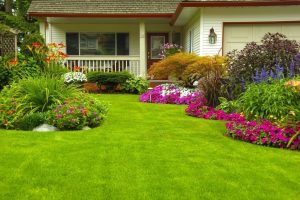Gardening is an art that connects us with nature and allows us to create a vibrant and beautiful space. Whether you are a seasoned gardener or just starting out, it is important to have the right knowledge and skills to ensure success. In this Green Thumb Guide, we will provide essential tips and tricks to help you achieve a flourishing garden.
1. Choose the Right Plants:
Before starting your gardening journey, it is crucial to select the right plants that are suitable for your climate and soil conditions. Consider factors such as sunlight exposure, water requirements, and maintenance needs. Researching and consulting local gardening experts will help you make informed decisions and prevent unnecessary frustrations.
2. Prepare the Soil:
The foundation of a healthy garden lies in the quality of the soil. Ensure that your soil is well-drained, nutrient-rich, and loose enough to allow plant roots to penetrate easily. Regularly amend the soil with organic matter, such as compost or manure, to improve its fertility and texture. Testing the pH level of the soil will also help you determine if any adjustments are needed.
3. Watering Techniques:
Watering your plants properly is essential for their growth and development. Different plants have different watering needs, so it is important to understand the requirements of each species. Generally, it is best to water deeply and less frequently rather than shallowly and frequently. This encourages plants to develop deep root systems and become more resilient to drought.
4. Weed Control:
Weeds are the unwanted guests in any garden. Regularly inspect your garden and remove weeds as soon as you spot them to prevent competition for resources with your desired plants. Mulching is a great technique to suppress weed growth, retain soil moisture, and improve the overall appearance of your garden.
5. Pest and Disease Management:
Pests and diseases can significantly hinder the success of your garden. Adopt preventive measures such as planting disease-resistant varieties and practicing good garden hygiene. Regularly inspect your plants for signs of pests or diseases, and take appropriate actions to control and manage them. Organic pest control methods, such as introducing beneficial insects or using insecticidal soaps, are environmentally friendly options to consider.
6. Pruning and Maintenance:
Pruning is an essential practice to promote healthy growth and shape your plants. Trimming dead or diseased branches, removing spent flowers, and controlling the size of your plants will ensure better airflow, reduce the risk of infections, and enhance the overall appearance of your garden. Regular maintenance
Regular maintenance is key to keeping your garden in excellent condition. This includes monitoring plant health, checking for signs of nutrient deficiencies, and promptly addressing any issues that may arise. Regularly fertilize your plants with organic or slow-release fertilizers to provide them with the necessary nutrients for robust growth. Additionally, keep an eye out for any signs of plant stress, such as wilting or discoloration, and take appropriate action to prevent further damage.
7. Proper Sunlight Exposure:
Different plants have varying sunlight requirements. Some thrive in full sun, while others prefer partial shade. It is important to understand the sunlight needs of your plants and position them accordingly in your garden. Observe the patterns of sunlight and shade in your yard throughout the day to determine the best locations for your plants. This will help ensure that they receive adequate sunlight for healthy growth.
8. Seasonal Care:
Gardens are ever-changing throughout the year, and each season requires different care practices. In spring, focus on cleaning up debris, preparing beds, and starting seeds indoors. Summer necessitates regular watering, weeding, and monitoring for pests. Fall is the perfect time for planting new crops, dividing perennials, and starting preparations for winter. During winter, protect fragile plants from frost and provide insulation when necessary.
9. Continuous Learning:
Gardening is a lifelong journey of learning and discovery. Take advantage of resources such as books, online forums, and local gardening clubs to expand your knowledge and exchange tips with fellow gardeners. Embrace experimentation, as each garden is unique, and what works for one may not work for another. Learn from both successes and failures, and adapt your approach to achieve a thriving garden.
With the right knowledge and techniques, anyone can develop a green thumb and create a successful garden. Remember to choose the right plants for your climate, improve the quality of your soil, practice proper watering techniques, manage pests and diseases, and regularly maintain your garden. By following these essential tips, you will be well on your way to enjoying
















Add Comment